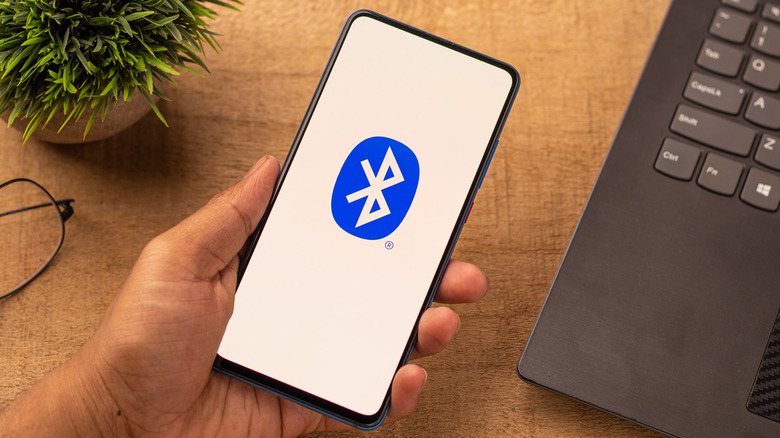The Epic Origin Of The Bluetooth Logo
Bluetooth technology may be a modern invention, but the story behind the now ubiquitous name and logo reaches back through time, connecting the past to the present.
It's easy to take for granted that smartphones can play music on a wireless speaker, a laptop can print documents without being physically connected to a printer, and friends can AirDrop pictures between iPhones without a cable tethering them together. Though it's almost impossible to imagine life without these conveniences, the reality is that this low-cost, low-power tech has only been around for a few decades.
In 1998, the Bluetooth Special Interest Group (SIG) was formed by Ericsson, IBM, Intel, Nokia, and Toshiba. A year later, the Bluetooth 1.0 specification – the first short-range wireless technology standard – was released, and consumer products sporting the then-new feature followed shortly after. Some of the first Bluetooth-enabled devices included mobile phones, PC cards, computer mice, and headsets. Today, thousands of devices from hearing aids to cars and refrigerators come equipped with the tech that, at one point in time, seemed almost magical.
Competing standards led to confusion
In the mid-1990s, several companies were simultaneously racing to develop a revolutionary new wireless technology called short-range radio links. At the time, Swedish engineer Sven Mattisson was working for Ericsson, and American Jim Kardach served as a mobile computing engineer at Intel.
Mattisson, Kardach, and engineers from several other companies came together and presented their competing standards and ideas at a seminar in Toronto in the late 1990s. In a first-hand account of the history of Bluetooth published on his website, Kardach recounted, "...Mattisson and I presented at a Home-RF SIG meeting which took place in Toronto Canada. I presented Biz-RF, and Sven presented MC-LINK. We received a luke-warm reception of our confusing proposal, and it was at this time I realized we needed a code name for the project which everyone could use."
It was after the seminar that Mattisson and Kardach went to a local bar to have a few beers. While commiserating over their perceived failure, the two men started talking about the history of the Vikings. Being from Sweden, Mattisson suggested Kardach read a well-known Swedish historical novel about the seafaring warriors from Scandinavia called "The Long Ships," written by Frans Gunnar Bengtsson.
Bluetooth's logo explained
The novel includes King Harald Gormsson, known for uniting the many different tribes of Denmark and Norway under a single ruler. Many Viking leaders had very imaginative nicknames, and King Harald's was "Bluetooth." Some historians claim he received this moniker because he had a dead or "blue" tooth, while others say he loved eating blueberries or licorice so much that it stained his teeth blue. The truth is, no one knows for sure.
What is known is Mattisson and Kardach loved the symmetry they had found. This Viking king had brought unity and communication to diverse groups of people, and their invention was trying to do the same thing with different electronic devices. Thus, calling it "Bluetooth" in honor of King Harald seemed appropriate.
According to the official Bluetooth "About Us" page, the name was supposed to be temporary until the marketing department could create something more clever. They eventually decided on "RadioWire" and "PAN" (Personal Area Networking), but "PAN" had already been taken, and a complete trademark search for "RadioWire" couldn't be finished before launch, so they stuck with "Bluetooth" for a while. The term proved popular, however, and it soon went from a temporary codename to the official term for the technology.
As for the omnipresent logo, it's actually a combination of Harald Bluetooth's initials — "ᚼ" and "ᛒ" — written in the Old Norse Runic alphabet called "futhark."


